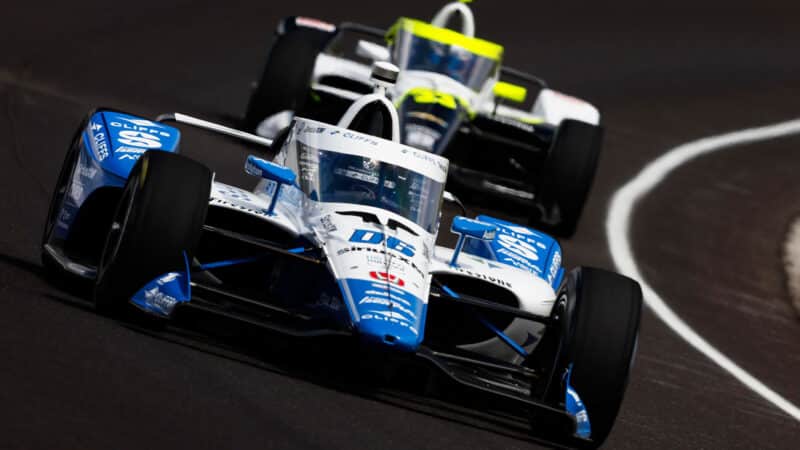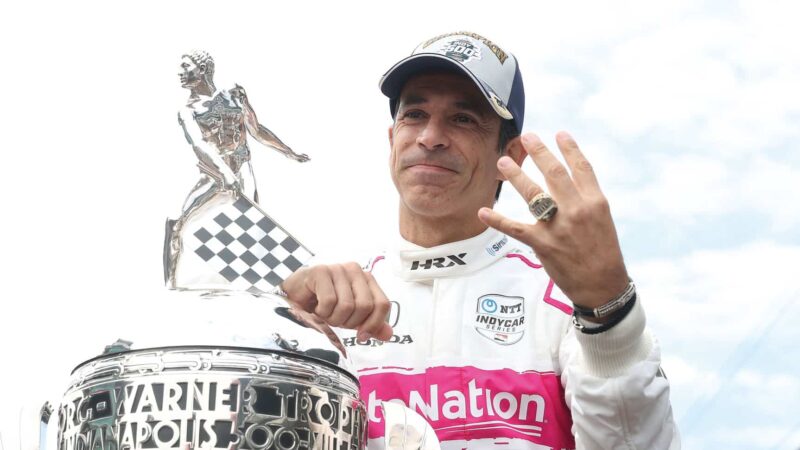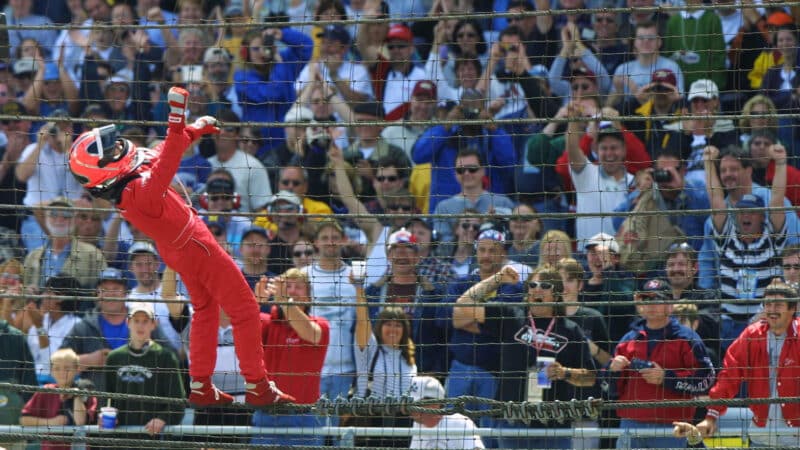An IndyCar in super speedway aerodynamic configuration generates up to 88% of its 5000lbs downforce from the floor. When a car runs in the turbulent air of a competitor it becomes ‘light’ as it loses aerodynamic grip – the name of the game is to try and regain this mainly through bolting on flaps, strakes and bargeboards to the protruding front section of the floor, wings and rear diffuser, while not adding too much as to make your car comparatively slow when running alone.
However, getting to the set-up sweet spot isn’t easy – Castroneves emphasises how is easy it is to be led up a blind gasoline alley.
“When you come to Indianapolis and practice for a week, it’s easy for you to start really well and then sometimes drive into the wrong direction without even noticing due to the weather, the track conditions changing etc.
“It’s a long week, but that’s why the details are so important because the cars are… I don’t want to say old [the Dallara DW12 made its debut in 2012]! But pretty much everyone knows all the tricks – so everybody is very, very close.”

Castroneves emphasises how important it is to have a car which can run well in traffic
IndyCar
One of the ‘Month of May’s’ peak moments of excitement is the qualifying knockout round, when cars run at their most trim while hitting over 240mph.
That said, putting aside the danger of being caught in a mid-pack pile-up, Castroneves doesn’t particularly value a high-starting position – achieved through a car with hot one-lap pace – above all else.
“It’s important but not a deal-maker,” he says. “Because it’s such a long race, you want to start the race with a good perspective on what to do, the strategy and things like that. However if your car is good, it doesn’t matter where you start.



